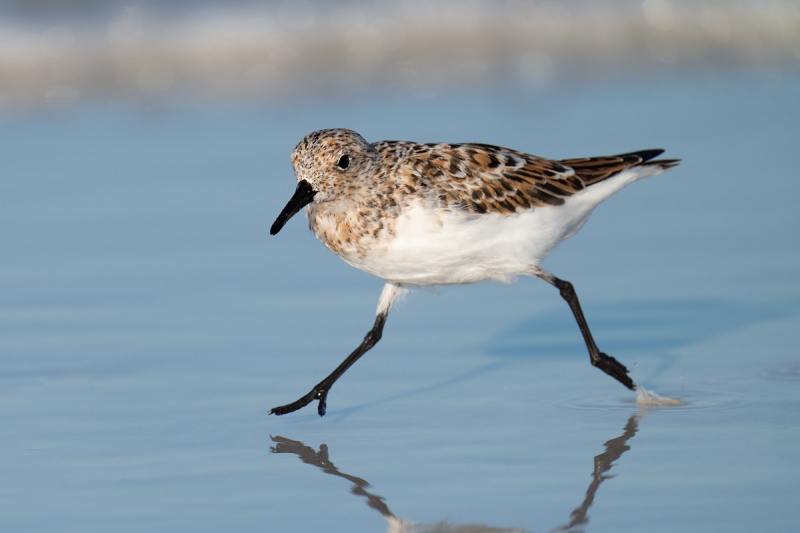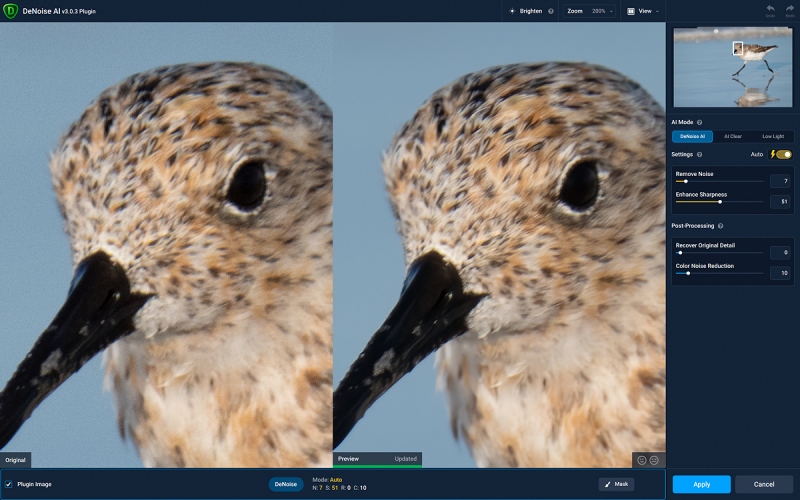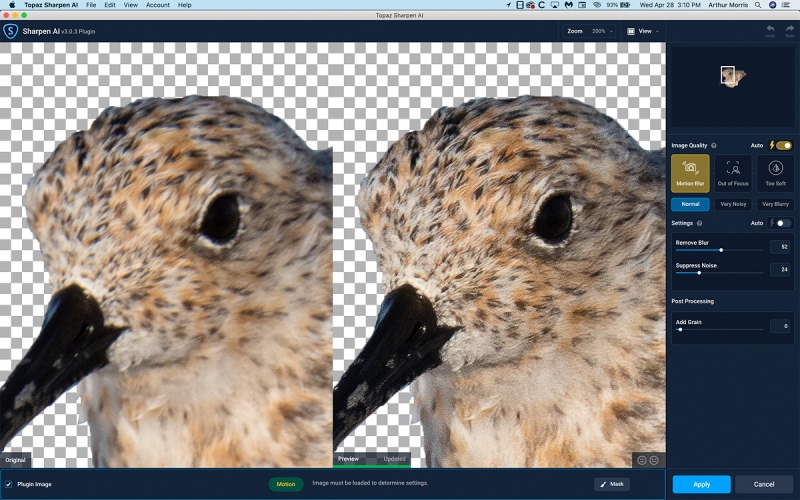Whats Up?
Though I did not create as many images on Wednesday morning as I had on Monday, the 3rd morning of the second DeSoto IPT was fantastic. The terns and skimmers were great right at sunrise but all the birds took flight and left without explanation. So we headed for the calmest pool to see what was up. We started with a gorgeous Marbled Godwit and its mirror image reflection. Next was a feeding spree with a half-dozen each of Snowy Egrets and Red-breasted Mergansers. We followed the birds along to stay on sun angle as much as possible. We had lots of great chances with the flying and landing snowies. As usual, Donna Bourdon opted to stay with a frantically dancing Reddish Egret. Shelley Lake and I worked some nice feeding Dunlins at ground level. All in all, it was a truly great morning. And when Shelley saw her images, she was astounded by their beauty and intimacy.
After our second delicious smoked salmon brunch in three days, we recorded a Camtasia video during which I edited a single folder with 2586 images from both sessions on 27 April. I wound up with 248 keepers after the first edit. It had been a very good morning. The video will be offered for sale soon for those who wish to learn to quickly pick their keepers from large files from the super-high frame rate bodies.
On Wednesday afternoon, we headed to a rookery in Brandon, FL. We arrived way too early to find the harsh light on a very warm — make that hot, afternoon. We found some good chow right nearby to kill some time. With tons of clutter, nests right next to each other, and too many branches everywhere, rookeries are difficult places to photograph. We hung in till the light was sweet and were rewarded when the two large chicks in the accessible Great Blue Blue Heron nest at the very top of the south colony island were fed. We were not headed back to Gulfport until 8:00pm. It was a long and rewarding day.
Today is Thursday 28 April, the last morning of the DeSoto IPT. The forecast for St. Pete is for test another perfect morning: clear and sunny with a southeast wind at 11mph. Wherever you are, and whatever you are doing, I hope that you have a great day.
This blog post took about two hours to prepare and makes 126 consecutive days with a new one. Please remember that if an item — a Delkin flash card, or a tripod head, for example, is available from B&H and/or Bedfords and is also available in the BAA Online Store, it would be great if you opt to purchase from us. We will match any price. Please remember also to use my B&H affiliate links or to save money at Bedfords by using the BIRDSASART discount code at checkout. Doing either often earns you free guides and/or discounts. And doing so always earns my great appreciation.
Hard to Figure …
After more than 20 folks left insightful comments on the Whole Catfish blog post, it is hard to figure out why only a single person left a comment in yesterdays A Catch-up Learning Day on the BIRDS AS ART Blog post here when asked to pick their favorite of four very strong images.
I really did enjoy Steve’s quite clever comment:
April 28, 2021 at 8:23 pm · Reply · Edit
In image #3 above, the Osprey forms a spectacular hood ornament for the flying catfish.
Thanks for dputting a smile on my face Steve.
Great Topaz News!
Folks who use the BAA Topaz link to purchase Sharpen AI, DeNoise AI, or the Utility Bundle (or any other Topaz plug-ins), will receive a 15% discount by entering the ARTHUR15 code at checkout. If the stuff is on sale (as it usually is), you save 15% off of the sale price! To get the discount you must use my link and you must enter the discount code. Be sure to start with this link.
Those who purchase Sharpen AI, DeNoise AI, or any other Topaz plug-ins using my link and then entering the ARTHUR15 code at checkout can e-mail to request a short Getting Started with Topaz e-Guide. Please include a copy of your Topaz receipt that shows the discount. Aside from the basics, the guide explains how to install the plug-ins so that they appear in the Photoshop Filter Menu.
Please Remember
With income from IPTs now at zero, please, if you enjoy and learn from the blog, remember to use one of my two affiliate programs when purchasing new gear. Doing so just might make it possible for me to avoid having to try to get a job as a Walmart greeter and will not cost you a single penny more. And if you use Bedfords and remember to enter the BIRDSASART code at checkout, you will save 3% on every order and enjoy free second-day air shipping. In these crazy times — I am out at least forty to sixty thousand dollars so far due to COVID 19 (with lots more to come) — remembering to use my B&H link or to shop at Bedfords will help me out a ton and be greatly appreciated. Overseas folks who cannot order from the US because of import fees, duties, and taxes, are invited to help out by clicking here to leave a blog thank you gift if they see fit.
New and Better Bedfords Discount Policy!
You can now save 3% on all of your Bedfords photo gear purchases by entering the BIRDSASART coupon code at checkout. Your discount will be applied to your pre-tax total. In addition, by using the code you will get 2nd day air shipping via Fed Ex.
Grab a Nikon AF-S Teleconverter TC-14E III and save $14.99. Purchase a Canon EOS R5 and your discount will be $116.97. Purchase a Sony FE 600mm f/4 GM OSS lens and save a remarkable $389.94! Your Bedford’s purchase no longer needs to be greater than $1,000.00 for you to receive a discount. The more you spend, the more you save.
Money Saving Reminder
Many have learned that if you need a hot photo item that is out of stock at B&H and would enjoy free second-day air shipping, your best bet is to click here, place an order with Bedfords, and enter the coupon code BIRDSASART at checkout. If an item is out of stock, contact Steve Elkins via e-mail or on his cell phone at (479) 381-2592 (Central time). Be sure to mention the BIRDSASART coupon code and use it for your online order to save 3% and enjoy free 2nd-day air shipping. Steve has been great at getting folks the hot items that are out of stock at B&H and everywhere else. The wait lists at the big stores can be a year or longer for the hard to get items. Steve will surely get you your gear long before that. For the past year, he has been helping BAA Blog folks get their hands on items like the SONY a9 ii, the SONY 200-600 G OSS lens, the Canon EOS R5, the Canon RF 100-500mm lens, and the Nikon 500mm PF. Steve is personable, helpful, and eager to please.


Gear Questions and Advice
Too many folks attending BAA IPTs (remember those?) and dozens of photographers whom I see in the field and on BPN, are–out of ignorance–using the wrong gear especially when it comes to tripods and more especially, tripod heads… Please know that I am always glad to answer your gear questions via e-mail
|
|
|
This image was also created on 26 April 2021, yet another from the great first morning of the second DeSoto IPT. Lying flat on my belly in the wet sand, I used the handheld Sony FE 200-600mm f/5.6-6.3 G OSS lens with the Sony FE 1.4x Teleconverter (at 840mm) and The One, the Sony Alpha 1 Mirrorless digital camera. ISO 800. Exposure determined via Zebras with ISO on the rear dial: 1/2500 sec. at f/9 (wide open) in Manual mode. AWB at 8:17am on a clear, sunny morning. Wide/AF-C was active at the moment of exposure and performed to perfection. Click on the image to see a larger version. Image #1: Sanderling running |
The Series
This running Sanderling image was made while I was seated. It is one of a series of five, all nicely framed. Hand holding the 200-60, even with the 1.4X TC, is a dream. The first four were razor-sharp on the eye, the last one, todays featured image, showed some motion blur on the face so it needed some special post processing care. See the Topaz Sharpen AI item below. I chose to optimize this one because the bird had both feet off the ground.
The bird is pretty much getting close to breeding plumage. The upperparts may become more orange over the next few weeks, but this species — even in full breeding plumage — shows lots of variation in color.
|
|
Image #1B: Topaz Denoise AI on the Sanderling running image |
Topaz Denoise AI
With images made in full sun, I will generally go with DeNoise on Auto, rarely changing any of the sliders. With higher ISO images made in low light, I will always go to the Comparison view and often find that either Low Light or AI Clear does a better job. In many cases, increasing the magnification to 200 or 400% makes it easier to see the differences in the three options. Note the complete elimination of background noise in this ISO 800 image. Remember that when the WHITEs are properly exposed, the middle tones are one stop too dark. Confused by that? See the section on Exposure Theory in the original (soft cover) The Art of Bird Photography.
|
|
Image #1B: Topaz Sharpen AI on the Sanderling running image |
Topaz Sharpen AI
So why might the fifth image in the series showed more motion blur than the first four? That likely occurred because I did not pan as smoothly with the last image as I had with the first four; the bird was higher in the frame than it was in the four sharp frames. To me, that shows that I jerked the lens a bit at the end. Or not.
In any case, the ability of Sharpen AI to re-align pixels to correct motion blur is nothing short of remarkable. Click on the screen capture above to better see the remarkable difference in the before image on our right and the after image on our left.
You can see that I applied Sharpen AI to a rough selection of the birds head (on a layer). As I have a hard time telling if that layer is over sharpened, I run Sharpen AI at full strength, go back to Photoshop, magnify the image, and click the visibility eyeball on and off. If it looks too crispy I will simply reduce the Opacity to taste. With this image, I reduced the Opacity to 60%.
Typos
With all blog posts, feel free to e-mail or to leave a comment regarding any typos or errors.


















Art: You can almost see the sanderling running. I also like the soft color at the top that repeats the colors in the sanderling.
Artie, your image of the running sanderling reminded me of an important development in the history of photography. In 1878, Eadweard Muybridge photographed a horse in various stages of its gallop, demonstrating for the first time that the animal does have all its hooves off the ground at one point in its gait (something that was unknown at the time):
https://www.smithsonianmag.com/smithsonian-institution/how-19th-century-photographer-first-gif-galloping-horse-180970990/
Thanks Elinor and James.
with love, artie
I like the sense of movement in this image. Very nice. Thanks for sharing.
Really like the both feet off, the great light, breaking wave at the top, the reflection of legs, and the motion of water the left foot stirred up. Everything in other words.